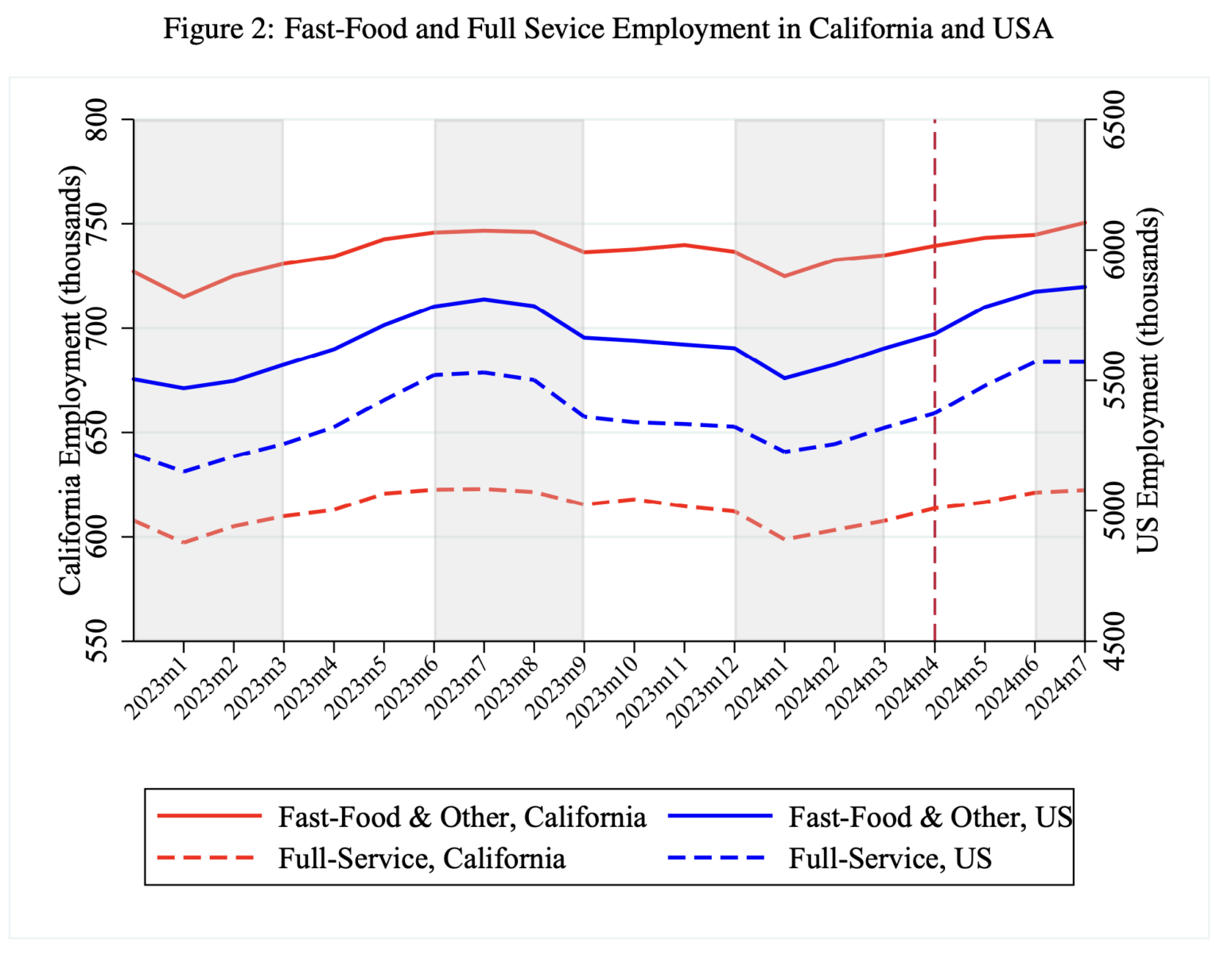@TBPInvictus here:
If you’re not aware of the brouhaha that was stirred about a year or so ago when CA Gov Gavin Newsom signed into law (taking effect April 1, 2024) a new $20 minimum wage for so-called “limited service” (a/k/a fast food or QSR) restaurant workers, read up here, here, or here.
In a nutshell, the usual suspects’ heads exploded well before the legislation even took effect, claiming it would lead to widespread devastation in the fast food space: job losses, restaurant closures, extreme price hikes, etc. We have seen this happen every time the minimum wage rises—lots of sound and fury that, in the end, signified nothing.
It began with some shoddy reporting at the Wall St. Journal, which seemed to unquestioningly reprint industry press releases. Even worse, the reporter involved is apparently unfamiliar with how Seasonal and Nonseasonal adjusted data works, making an embarrassing Economics 101 error that any freshman college student should have caught. The mistake then spread to the Hoover Institution, then a CA group called CABIA, the NY Post and, of course, Fox News.
Motivated reasoning is a powerful source of media error.
The entire episode is reminiscent of what happened in Seattle a decade ago, which this site painstakingly debunked in great detail.
We know that numerous academic studies have shown that most dire forecasts that are made about raising the minimum wage do not come to pass. And now comes the first such study about the hike in California. Cut to the chase:
We find that the sectoral wage standard raised the average pay of non-managerial fast food workers by nearly 18%, a remarkably large increase when compared to previous minimum wage policies. Nonetheless, the policy did not affect employment adversely. It did increase fast food prices, on a one-time basis only, by about 3.7%, or about 15 cents for a $4 item. Consumers, therefore, absorbed about 62% of the cost increases. These effects are benign. However, restaurant profit margins likely fell, and the royalty fees restaurant operators pay to franchisors likely increased.
As laid out in a press release from Newsom’s office:
- Wages increased by 18% – For 90% of non-managerial workers, wages increased by 18%, representing a meaningful bump for workers who have historically been underpaid despite many being the primary breadwinners in their families.
- No job cuts – The wage increase did not lead to job cuts, despite what critics had said would be a doomsday for the industry.
- Profit margins were already high – The industry had been benefiting from “monopsonistic (higher than competitive) profit margins” which have “absorbed a substantial share of the cost increase.”
- 15 cents – The cost of menu options rose by only 3.7%, which is roughly just 15 cents for a typical $4 hamburger.
There can be no doubt that this battle will be fought again. And again. And again. And again. But we also know what the likely outcome will be, because we’ve already seen this movie several times.
Until next time.
Previously:
Seattle Redux: Misunderstanding Seasonal Adjustments (June 10, 2024)
Debunking QSR Minimum Wage BS: A Follow Up (June 13, 2024)
Sources:
Sectoral Wage-Setting in California
Michael Reich and Denis Sosinskiy
IRLE Working Paper No. 104-24.
UC Berkeley, 2024
California’s $20 Fast-Food Minimum Wage Is a Win-Win-Win, Research Says
Governor’s Office, Oct 3, 2024
California Restaurants Cut Jobs as Fast-Food Wages Set to Rise
“Chains lay off workers, shave hours ahead of state minimum-wage increase”
By Heather Haddon
WSJ, March 25, 2024
The fast-food industry claims the California minimum wage law is costing jobs. Its numbers are fake.
by Michael Hiltzik
L.A. Times, June 12, 2024 (Free mirror: Yahoo)


